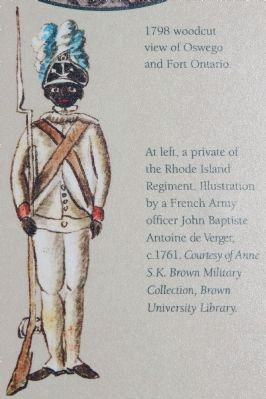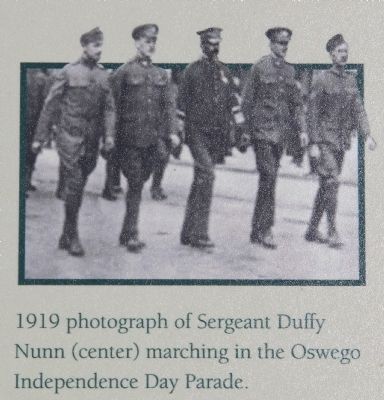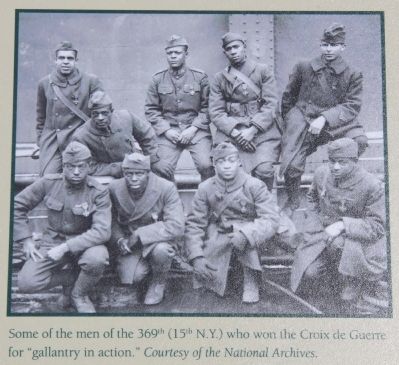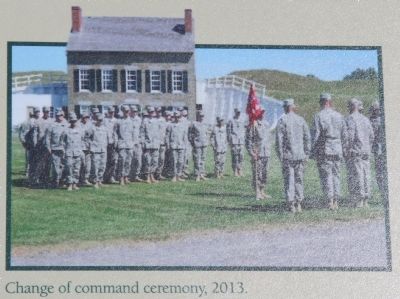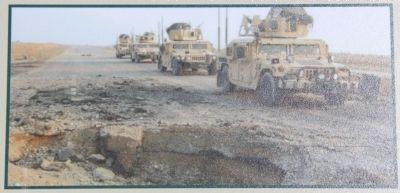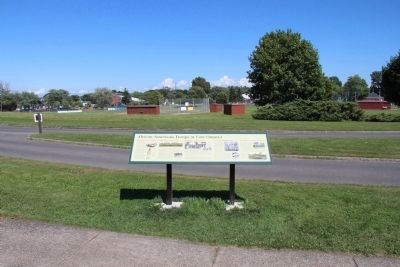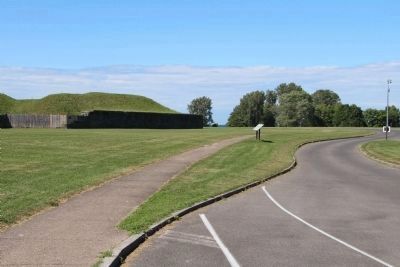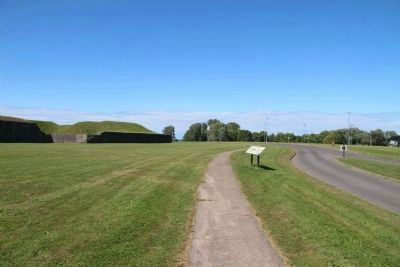Oswego in Oswego County, New York — The American Northeast (Mid-Atlantic)
African Troops at Fort Ontario
Revolutionary War (1775-1783)
Over 5,000 African Americans served in the Continental Army during the Revolutionary War. About half of the Rhode Island regiment consisted of free blacks and escaped slaves. In February 1783, Colonel Marinus Willet led 750 men of the Rhode Island Regiment and New York Levies through snow and freezing temperatures against British-held Fort Ontario. Willet arrived at Oswego too late to launch a surprise night attack as planned. Suffering from frostbite and exposure, he and his men returned to the Mohawk Valley
Buffalo Soldiers (1908-1911)
The 24th Infantry garrisoned Fort Ontario from 1908-1911. One of four African American regiments formed in 1869, it was the last to be desegregated in 1954. African American regiments faced discrimination, and efforts were made to disband them despite their exemplary service. The 24th, however, enjoyed pleasant relations with citizens during its tour in Oswego. During the Spanish American War, Sergeant Duffy Nunn served in Cuba with the 24th U.S. Infantry. There, he nursed white soldiers. Later, he served with the Hospital Corps at Fort Ontario. Nunn retired in Oswego and is buried in the Post Cemetery.
Post Hospital #5 (1917-1921)
From 1917-1921 Fort Ontario became U.S. Army Post Hospital #5. African Americans were excluded from the NYS National Guard until 1915, when the 15th NY Infantry was organized and in New York City. Private William Zuill never sailed to France with the 15th, which mobilized as the 369th Infantry Regiment, the "Harlem Hellfighters." He died of tuberculosis on February 12, 1918, and is buried in the Post Cemetery.
Private Strodder Taylor served in the 505th Engineers. The 505th was a "colored labor battalion" mostly relegated to labor duties during World War I. One of many wounded soldiers brought to the fort, Taylor is buried in the Post Cemetery.
The Harlem Hellfighters (1941)
The 369th Anti-Aircraft Artillery Regiment trained at Fort Ontario in 1940 and consisted of 1,800 African Americans who performed their duties with respect and dignity. In 1940, President Franklin D. Roosevelt improved opportunities in the military for African Americans. He appointed Benjamin O. Davis as the first African American Brigadier-General. Davis fought army efforts that limited blacks to support roles and succeeded in converting the 369th "Harlem Hellfighters" from an infantry to anti-aircraft artillery regiment. Prior to this, many considered blacks to lack the intelligence needed to perform these tasks.
444th Engineer Company (1950s-present)
The U.S.
Army Reserve has maintained a training facility on the old Fort Ontario Military Reservation since the 1950s, continuing a military occupation of the post that dates back to 1755. The 444th Engineer Company, 479th Engineer Battalion, USAR, currently garrisons the post. The modern armed forces represent the tapestry of cultures that makes up this country and have been open to soldiers of all races since 1948, when President Truman's Executive Order 9981 effectively ended segregation in the services.
Topics and series. This historical marker is listed in these topic lists: African Americans • Forts and Castles. In addition, it is included in the Buffalo Soldiers, and the Former U.S. Presidents: #33 Harry S. Truman series lists. A significant historical month for this entry is February 1783.
Location. 43° 27.903′ N, 76° 30.429′ W. Marker is in Oswego, New York, in Oswego County. Marker is on East 4th Street north of Show Park Road, on the left when traveling north. This historical marker is a panel that is situated on the grounds of the Fort Ontario State Historic Site, near the northern edge of the parking lot, and a short distance north of the beginning of the footpath that leads to the entrance of Fort Ontario. Touch for map. Marker is in this post office area: Oswego NY 13126, United States of America. Touch for directions.
Other nearby markers. At least 8 other markers are within walking distance of this marker. Prideaux's Campaign (within shouting distance of this marker);
Fort Ontario (about 400 feet away, measured in a direct line); Holocaust Survivors (approx. 0.2 miles away); Fort Ontario State Historic Site (approx. ¼ mile away); British Invasion (approx. ¼ mile away); The Post Cemetery (approx. ¼ mile away); Those Buried At Fort Ontario (approx. ¼ mile away); 12 Unknown Revolutionary Soldiers (approx. ¼ mile away). Touch for a list and map of all markers in Oswego.
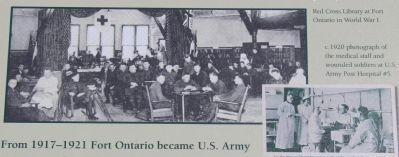
Photographed By Dale K. Benington, July 22, 2015
5. African Troops at Fort Ontario Marker
Close-up view, that is displayed on the marker, of a photograph, showing the Red Cross Library at Fort Ontario in World War I (and another c.1920 photograph showing the medical staff at U.S. Army Post Hospital #5).
Credits. This page was last revised on June 16, 2016. It was originally submitted on July 25, 2015, by Dale K. Benington of Toledo, Ohio. This page has been viewed 1,111 times since then and 61 times this year. Photos: 1, 2, 3, 4. submitted on July 25, 2015, by Dale K. Benington of Toledo, Ohio. 5, 6, 7, 8, 9, 10, 11. submitted on July 26, 2015, by Dale K. Benington of Toledo, Ohio.

